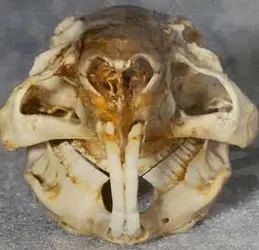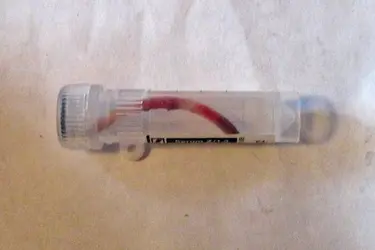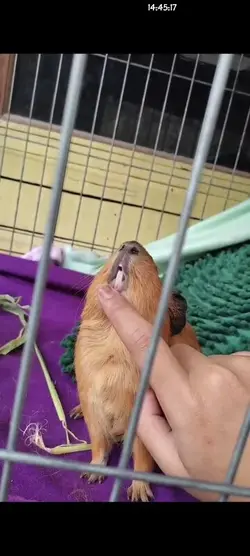-
Discussions taking place within this forum are intended for the purpose of assisting you in discussing options with your vet. Any other use of advice given here is done so at your risk, is solely your responsibility and not that of this forum or its owner. Before posting it is your responsibility you abide by this Statement
You are using an out of date browser. It may not display this or other websites correctly.
You should upgrade or use an alternative browser.
You should upgrade or use an alternative browser.
bottom teeth
- Thread starter alvarezboy
- Start date
Bill & Ted
Forum Buddy
No, if your piggie is eating normally then leave well alone. Once their teeth have been unbalanced by dental work then the chances of them ever working normally again are very slim. Their teeth are geared up to precision and fine tune their length by wearing against each other. Guinea pigs incisor teeth are long

If they are slanted at an angle across both teeth then that can signify an issue with the back teeth. her teeth look nice and straight, so she is eating evenly at the back so look to be nice, healthy teeth
are her bottom teeth too long?
Hi
No, they aren't. Yours look perfectly normal and healthy.
Bottom teeth always look much longer since the upper incisors are hidden by the upper lips partially covering the upper incisors whereas the lower lips pull away in front of the bottom teeth - you can see the thin dark line in front of the lower incisors going much further down compare to that between the upper lips and incisors in the x-ray picture below.
Incisors are ca. 4 cm long. They are thin and curved, which makes much them more prone to breaking; what you see is actually only the very tip.


This is a picture of my Nesta's bottom incisor after its removal due to a root infection; it is bloody from the operation.

You judge the health of your incisors by the edges, not by their length. Incisors are self-sharpening against each other and should have clean, horizontal edges. If the edges of the incisors are pointing inwards and are no longer meeting, then that means that there is major problem with a back teeth being overgrown so badly that the incisors are no longer meeting; they will also often discolour when that happens.
Incisors are used for picking up and cutting food whereas the all important grinding teeth at the back have developed a perfect balance against the main food source, grass fibre which is very nutritious but tough and high in abrasive silica. This is why guinea pigs and their larger cousins, the capybaras, have one of the fastest dental growth rates of all rodents - and why hay and grass are so important for their health; not just for the gut and overall health and longevity. Pellets and veg contain far too little abrasive fibre in comparison.
- If there is a slant in the incisors, then you are most linkely dealing with a pain issue on one side, either in an incisor root or in the root of a back tooth, due to one-sided chewing; earache can also lead to one-sided chewing. One-sided pain can also come from an abscess behind an eye (bulging eye) or an earache/ear infection or blockage (can also cause a head tilt)
- If the edges are jagged and uneven, then there is likely a problem with overgrowth at the back, leading to restricted, uneven chewing.
- A v-shaped indentation in the middle of inthe incisors points towards reduced jaw movement.
- If the incisors are pointing inwards and are no longer meeting, then this means that the all important back teeth are badly overgrown and may trap the tongue, which also often causes salivation and a permanently wet chin - the same symptoms without dental overgrowth are usually a symptom of a blockage of some sort somewhere in the digestive system starting with a fungal mouth infection, swellings in the throat or the back of the mouth or blockages in the gut and loss of appetite.
Please never allow a vet to just cut incisors arbitrarily because they look 'too long'; in a normal, fully working and balanced dental system they are the right length, irrespective of how long they look. If there is a real problem with overgrown incisors, then the problem is located at the back and not with the incisors; only cutting the incisors won't help.
Seeing that you are in a part of the world where vet access is limited and there are no vets experienced with guinea pigs, I hope that this helps you?
fluffysal
Forum Donator 2024/25
She has beautiful teefies and it looks like she's a very good girl for letting you check them so easily 
Share:
